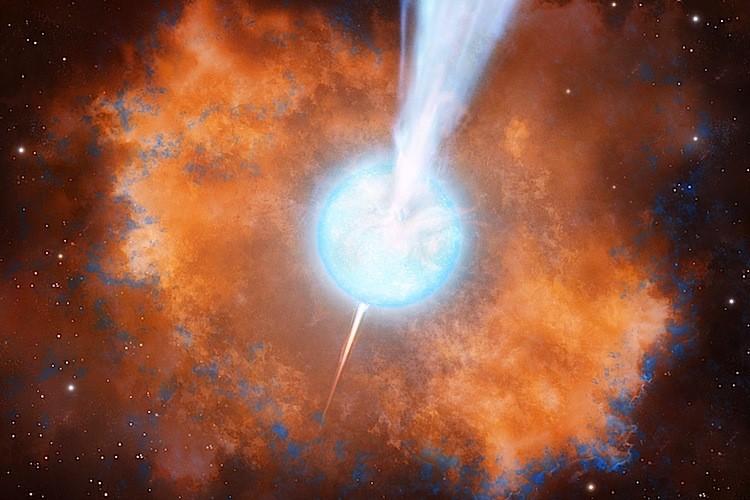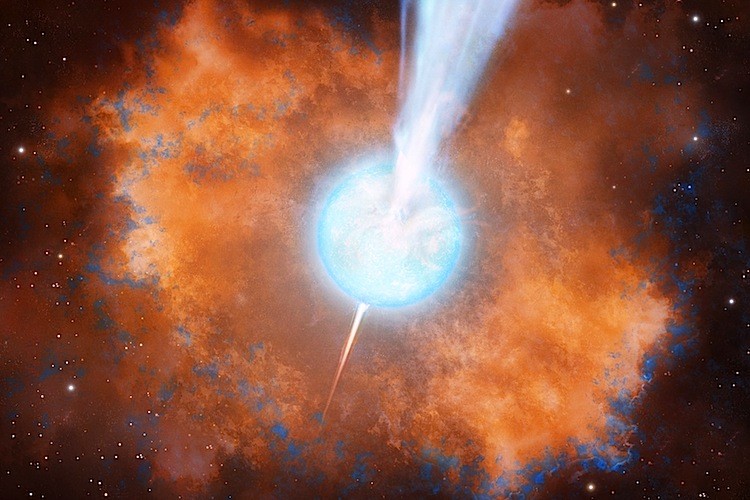Gamma-ray bursts (GRBs) form standard candles for measuring the largest distances in the universe. The new technique is helping astrophysicists decide which model best describes dark matter’s nature by allowing variations in its density to be measured since the big bang.
The longest bursts were probably emitted when the core of a large star collapsed to form a black hole. Such radiation is so intense that explosions can be observed as far back as 400 million years after the big bang.
An international team of researchers analyzed previous gamma explosions and found some that could be calibrated using other methods, such as Type Ia supernovae, to measure the total energy of the explosion.
“We are able to determine the distance of an explosion on the basis of the properties of the radiation emitted during gamma-ray bursts,” said Marek Demianski of Poland’s University of Warsar (FUW) in a press release.
“Given that some of these explosions are related to the most remote objects in space that we know about, we are able, for the first time, to assess the speed of space-time expansion even in the relatively early periods after the big bang.”
The concept of dark energy was originally put forward by Albert Einstein as a constant force that opposes gravity and prevents the universe from collapsing. However, he later referred to this as his biggest blunder.
Then in 1998, analysis of Type Ia supernovae’s brightness was fainter than expected, meaning they are more distant than assumed because the universe’s expansion must be accelerating. Dark energy was therefore proposed to reconcile these observations.
“Overnight, dark energy became, quite literally, the greatest mystery of the Universe,” Demianski said.
Currently, there are two models used to investigate dark matter. The first is based on Albert Einstein’s theory, while the second proposes that accelerated expansion is due to an unknown scalar field.
“In other words, it is either-or: either space-time expands by itself or is expanded by a scalar physical field inside it,” Demianski explained.
If dark energy’s density has remained constant, it is linked with the cosmological constant, the property of space-time, whereas if a scalar field is responsible, dark energy’s density would change as space-time expands.
The team found statistical associations between an explosion’s total energy and its gamma radiation. Although extremely remote GRBs are fairly rare, the team has developed a tool to test hypotheses of the universe’s structure.
“All we need to do now is wait for the next cosmic fireworks,” Demianski said.






Friends Read Free